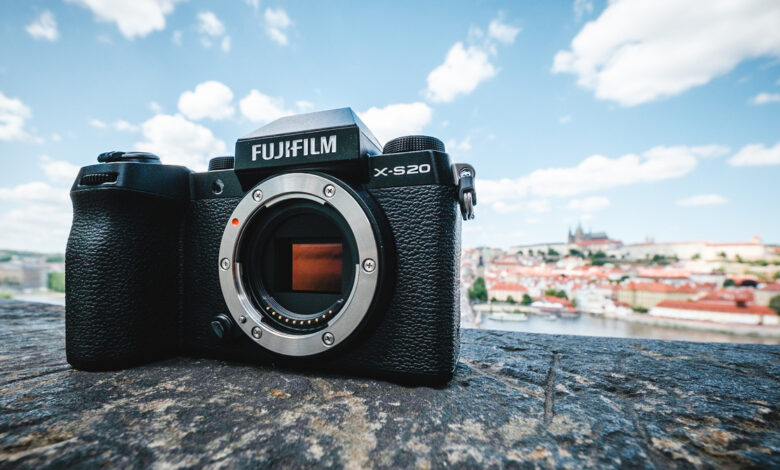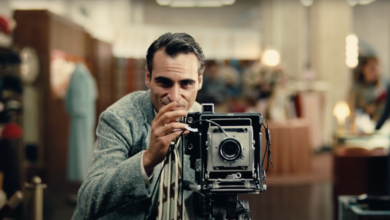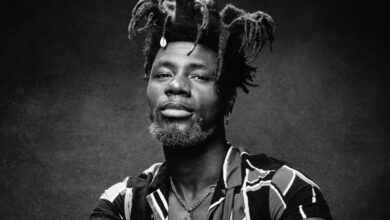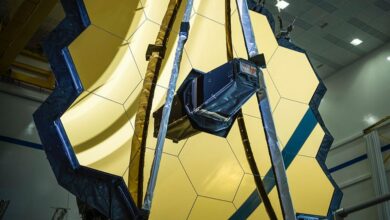Tiny But Mighty: We review the Fujifilm X-S20 mirrorless camera

The Fujifilm X-S20 here and it really feels like a complete package for enthusiasts, hobbyists, vloggers, content creators, and a combination of all of the above. It’s a small camera body packed with professional features. So catch what? Have a?
Compact but in all good ways
The bodywork is virtually unchanged from the previous version of the XS model. However, it still feels very small in the hand with a very deep and ergonomically comfortable grip. Holding the device feels safe and secure. While some might object to the fact that the camera is so small your pinky can’t even touch your body, I don’t mind it at all. My grip is still sturdy and not once have I felt like I could drop the camera.
The layout of all controls remains the same as the X-S10. Only some buttons on the top of the body are enlarged and slightly deviated. If it works, don’t fix it. We still have a “DSLR-like” digital exposure control instead of the analog-style dials we’ve grown accustomed to with Fujifilm. So the three programmable dials are still here with the same functionality. There is an interesting bit of “lower level” X-S20 there are more dials to control your exposure than professional bodies like X-H2 or X-H2S. Both have rear and front wheels only, so one of them has to be swapped between modes like exposure compensation and ISO, while X-S20 there is a third dial on the opposite side, which you can permanently set to ISO. It makes a lot of sense when you use it.
The only major difference in size is the slightly thicker handle. Thanks to that change, the camera is finally running on NP-W235 instead of a smaller battery NP-W126S from previous generations. Battery life is now pretty much twice that. I got a little over 90 minutes on a single charge, not to mention the number of shots. CIPA rates it at 750 frames, but I got past that, into four digits, and that’s using the high performance mode.
Improved connection
The ports are mostly unchanged except for a few major changes. We still get USB-C for charging and power delivery, however, the speed has been doubled from 5 Gbps to 10 Gbps. It is also instant webcam enabled. The microphone input sits neatly above the ports so it doesn’t cover the screen when flipped forward. Micro-HDMI brings a big update, but more in the video section. The best upgrade to the ports is the inclusion of a 3.5mm headphone jack for instant audio monitoring. It is located on the opposite side of the body for more comfortable use. The SD card slot is still next to the battery; however, it is currently UHS-II compatible. This is most definitely needed for video specs.
Much the same thing? not really
Many have wondered what the new sensor will be. Some people think it will be the 40 megapixel one from X-T5and some hope for a stacked word X-H2S. Luckily, we have something a little different. The same BSI X-Trans 4 from the previous generation of Fujifilm cameras is running the program, just like in the X-S10 or any other previous generation camera. I see that as a good thing. The sensor is always provided whenever I need it when I use the X-Pro3, X-T4, or my existing backup body, the X-T3. Image quality, low-light performance, and speed are more than adequate for most uses, but this time the sensor is powered by a new generation processor, the X-Processor 5.
What does it mean? We can enjoy all the benefits of the new processor at the lower cost of a cheaper sensor. The most notable improvement is in the autofocus unit. Subject detection, tracking, autofocus, and buffering have all been significantly improved. We have a lot of audience to track. I’ve tried many different styles, and the only time I’ve missed a shot is when the motors in my slower lens can’t keep up with the subject’s movement. But whenever I use the faster moving glasses, the experience is amazing.
The same goes for buffers. The X-S10 is capable of capturing 17 raw files at 20fps or 21 raw files at 10fps. The new processor is capable of processing 79 raw images at 20 fps or 341 raw images at 10 fps. The improvement is huge. Last but not least, we also get a new film simulation Nostalgic Negative, which is great for warmer portraits. This feature was introduced a while ago but never appeared on the X-Trans 4 camera.
Most Important Improvement: Video
The XS lineup has always been marketed to video makers. The X-S20 are superior in terms of video, better than more advanced X-T5 in some way. The processor is seriously showing us what the sensor can do. This tiny body can shoot DCI 4K video at 60fps. It can record internally at 10-bit 4:2:2 and 360 Mbps as well as open port 6.2K 30fps using the entire sensor. We also get F-Log2 on the already existing F-Log, so for now, dynamic range hits over 13 stops. The aforementioned Micro-HDMI can even output 12-bit raw video.
Overheating is definitely an issue for such a small body, but fortunately Fujifilm has thought of that in advance and made the back of the body compatible with FAN-001 Accessories introduced with the release X-H2S. 1080p video can now also be shot at 240fps, but saved at 24fps for 10x slower motion straight from the camera.
Vloggers will also welcome the dedicated Vlog mode on the dial, which allows them to change various settings using just the articulating touchscreen.
What I like
I love the compact size while remaining ergonomically well thought out, which keeps the camera perfectly balanced. It feels great in the hand and takes up very little space in the bag. Sure, the viewfinder has a lower resolution than most cameras these days, but the image is still clear and easy to view. The battery life is so good that I never needed to notice it. The shutter mechanism is one of the cheaper units that Fujifilm makes, clocking in at only 1/4000th of a second in mechanical mode, but the camera will seamlessly switch to electronic when needed up to 1/32,000 second.
The control scheme, including customizable wheels, makes controlling exposure simple and easy. In fact, the whole experience is quick, simple, and easy. I definitely consider this camera my everyday street photography tool thanks to its speed and size. And most striking is the new AF system. It’s great!
What I don’t like
I understand the reasoning behind it, but weather resistance would be a great addition. My best guess is it will in fact make the camera more expensive or bigger. Could be both. So yeah, keep it this way. The single card slot didn’t make me any less afraid of losing files. I’ve had card issues before, so the built-in storage would be pretty cool if there wasn’t room for a second slot. Some cameras have shown that is possible.
As mentioned before, the shutter mechanism is of the lower grade compared to professional-grade bodies, so the sound it produces doesn’t sound as pleasing to the ears. X-H2(S) or X-T5but that’s just me choosing nit.
Sample
An almost complete package
As I said before, the Fujifilm X-S20 is a powerful camera in a small body. Paired with the right lens, it can be perfect for a street photographer, travel photographer, enthusiast, hobbyist or even a fun camera for professionals. business use on their holidays. I know I wouldn’t mind having one, although I’m very pleased with X-T5.
YouTubers, video producers, amateur filmmakers, and film students will likely enjoy this. The video features are amazing considering the size and price. Image quality, bitrate, recording options, active cooling options, battery life, and seven stops of image stabilization make X-S20 a very strong opponent for things like Nikon Z30, Sony ZV-E10, Canon R10or any other “vlogger-centric” camera.




